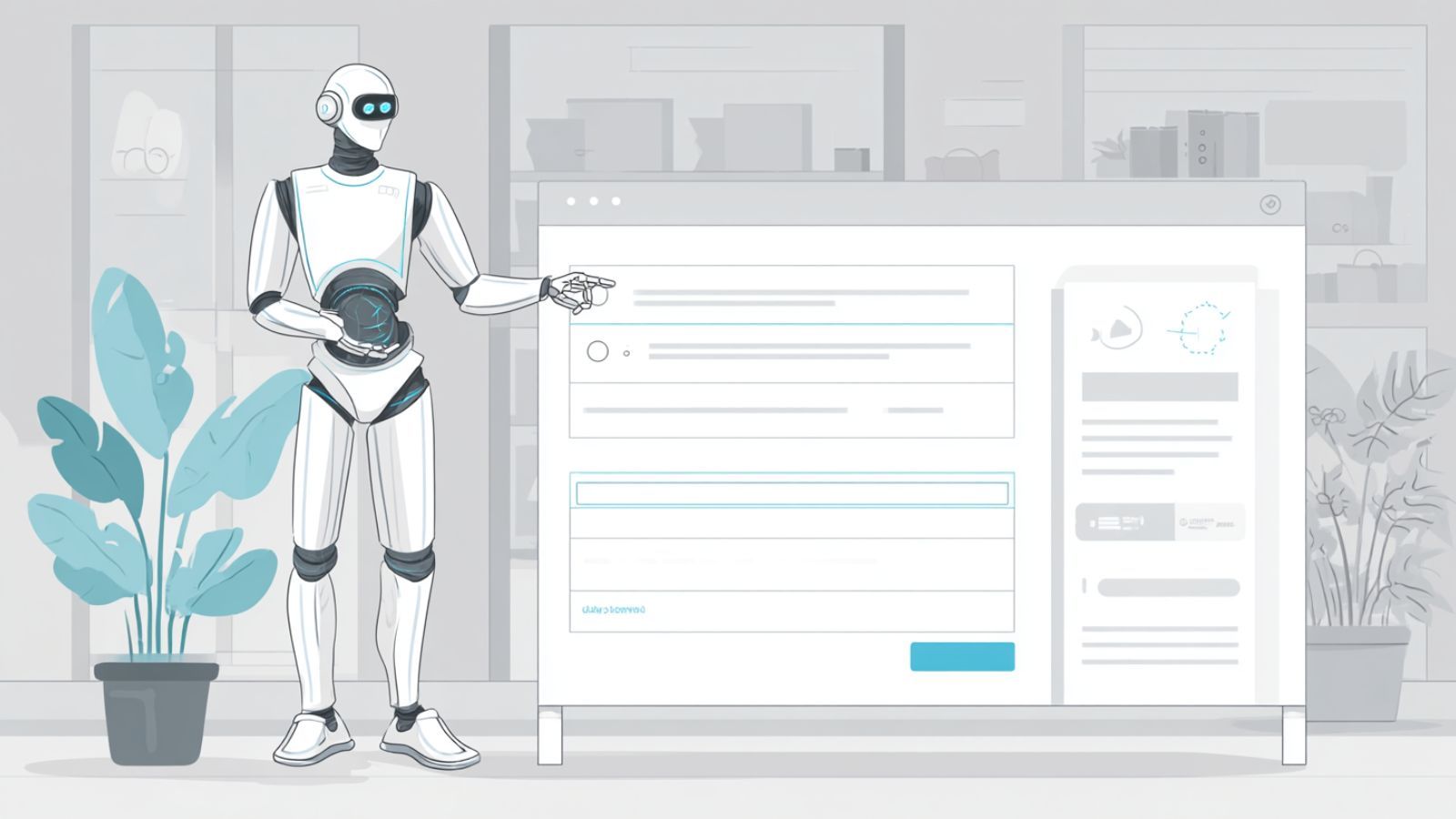AI assistants are starting to do more than answer questions. Tools from Apple, Google, and OpenAI are beginning to take action—booking flights, submitting forms, even completing checkouts. And that changes how we need to think about our websites.
You’re no longer just designing for the person with the phone or laptop. You’re now designing for the AI agent acting on their behalf.
Why It Matters
These agents don’t “browse” like we do. They don’t see layouts or click buttons—they interpret markup, rely on structured data, and look for clear, accessible patterns in your code.
If your checkout flow is buried in JavaScript-heavy components, or your form fields aren’t labelled properly, there’s a good chance those bots either:
- Can’t complete the action
- Or don’t even try
And because these failures are silent, you won’t see an error in GA or a complaint in support. You’ll just lose potential conversions without knowing why.
Technical Checklist: What to Fix
Here are four practical areas worth reviewing if you’re running a site that relies on forms or e-commerce flows:
1. Use Semantic HTML
- Every input needs a proper
<label>bots need context. - Use accurate field types:
email,tel,number,date, etc. - Don’t use
<div>s pretending to be buttons. Use actual<button>elements with readable text.
2. Minimise JavaScript Dependency
- Avoid requiring JS to render a form or submit a simple action.
- If you use modals for checkout, ensure there’s a fallback path or the modal is exposed cleanly in the DOM.
- Don’t hide essential steps behind JS-only interactions.
3. Add Structured Data
- Use Schema.org markup for
Product,Offer,Order, etc. - JSON-LD is preferred because it is easy to implement and easy for bots to parse.
- Mark up key details: price, availability, CTA links.
4. Be Bot-Friendly in Your UX
- Don’t time out forms too quickly.
- Allow for resubmissions.
- Return status messages a bot can interpret (e.g., “Order confirmed” in plain text, not just animations).
A Practical Example
We ran into this with a Shopify store. The site looked great and worked fine for users, but Apple’s AI couldn’t place an order. The issue? The “Buy Now” button was a <div> with a JS click handler—no text, semantics, or context.
We replaced it with a proper <button type="submit">Buy Now</button>, and the issue was resolved immediately.
Small fix. Big impact.
Already Doing SEO? You’re Halfway There.
If your team has been investing in Technical SEO, you’re already building for bots—this is just the next phase.
AI agent-readiness builds on the same foundations: semantic HTML, accessible structure, and clean markup. It’s not a massive pivot; it’s an extension of good practice.
Final Thought
If your business depends on form submissions or online checkouts (and most do), it’s worth checking how friendly your site is to these new AI agents.
At Whizz People, we help businesses optimise for both human users and the systems acting on their behalf—search engines, AI agents, screen readers, and more.
If you’d like a quick review or want to sanity-check your current setup, feel free to reach out. No pressure.




